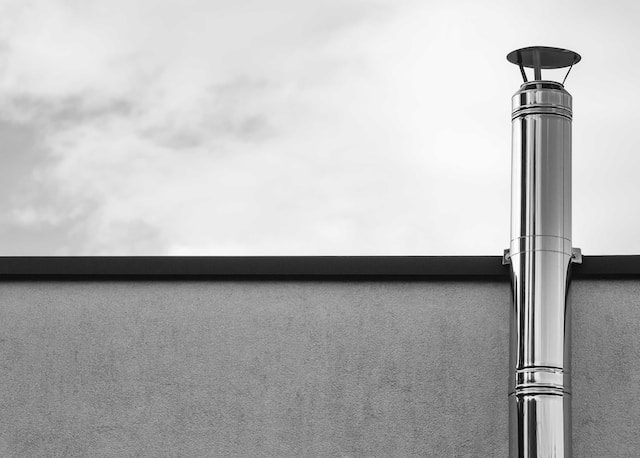
Metal chimneys provide durability and longevity to residential and commercial structures. However, over time, these chimneys can develop issues that require timely repair to ensure proper functionality and safety. In this article, we will explore the key aspects of metal chimney repair, including common problems, inspection procedures, and repair techniques to restore and maintain your chimney’s integrity.
Identifying Common Metal Chimney Issues
Metal chimneys may experience a range of issues that require repair. Some common problems include:
a. Rust and Corrosion: Over time, metal chimneys can corrode due to exposure to moisture and environmental factors. Rust and corrosion weaken the structure, leading to leaks and potential collapse.
b. Cracked or Loose Joints: Metal chimney sections are often joined together with seals or fasteners. Over time, these joints may develop cracks or loosen, leading to water intrusion or structural instability.
c. Damaged Flashing: Flashing is the metal material that creates a waterproof barrier between the chimney and the roof. Damaged flashing can result in water leaks and damage to the surrounding areas.
d. Deteriorated Liner: Metal chimney liners play a crucial role in directing smoke and gases safely out of the chimney. If the liner becomes damaged or deteriorated, it can compromise ventilation and lead to hazardous conditions.
Conducting a Thorough Inspection
Before proceeding with repairs, it is crucial to conduct a comprehensive inspection of the metal chimney. This inspection can be carried out by a professional chimney technician and should include:
a. Visual Assessment: A thorough visual examination of the chimney’s exterior and interior to identify visible signs of damage, such as rust, cracks, or loose components.
b. Flue Inspection: Checking the chimney flue for any obstructions, deterioration, or signs of excessive heat damage.
c. Flashing Evaluation: Examining the flashing around the chimney to ensure its integrity and functionality.
d. Liner Examination: Inspecting the chimney liner for any signs of damage, corrosion, or deterioration.
Repair Techniques for Metal Chimneys
Once the inspection is complete and the specific issues are identified, appropriate repair techniques can be implemented. Some common repair methods include:
a. Rust and Corrosion Treatment: Removing rust and corrosion using wire brushes or sandblasting, treating the affected areas with rust inhibitors, and applying suitable protective coatings to prevent future corrosion.
b. Joint Repair: Repairing cracked or loose joints by replacing seals, tightening fasteners, or applying heat-resistant sealants to ensure proper structural integrity.
c. Flashing Replacement: Damaged flashing should be removed and replaced with new, properly installed flashing to prevent water leaks and further damage.
d. Liner Restoration or Replacement: Depending on the severity of the damage, the chimney liner may need to be repaired or replaced entirely. Options include patching damaged sections, relining with a new metal liner, or using alternative liner materials.
Regular Maintenance and Safety Precautions
After completing the necessary repairs, it is essential to establish a regular maintenance routine to prolong the lifespan of the metal chimney. Some key maintenance tips include:
a. Regular Cleaning: Removing debris, soot, and creosote buildup from the flue and chimney to prevent blockages and potential fire hazards.
b. Waterproofing: Applying waterproof sealants or coatings to protect the chimney from moisture intrusion.
c. Professional Inspections: Scheduling periodic inspections by a certified chimney technician to identify any potential issues before they escalate into major problems.
d. Safety Precautions: Following proper safety guidelines, such as using appropriate chimney caps, maintaining proper clearances, and installing carbon monoxide detectors.
Metal chimney repair is essential for maintaining the safety, functionality, and longevity of your chimney system. Identifying common issues, conducting thorough inspections, and employing appropriate repair techniques can help address problems promptly. By implementing regular maintenance and adhering to safety precautions, you can ensure that your metal chimney remains in optimal condition, providing efficient and reliable performance for years to come.
